
© Rachel Hollings. (Click image for larger version)
Ashton Rediscovered Masterclass: Voices of Spring, coached by
The Frederick Ashton Foundation
Royal Ballet School, London
23 February 2020
www.frederickashton.org.uk

© Anthony Crickmay/ V&A Images/ Victoria and Albert Museum
What a pleasure and a privilege it was to be invited to watch an Ashton Masterclass at the studios of the Royal Ballet Upper School. Christopher Nourse, Executive Director of The Frederick Ashton Foundation, welcomed a full audience to the 9th masterclass in a series which began four years ago, explaining that the works they have covered have rarely been performed in recent years. He emphasised how important it was to be able to bring back the people who created the roles; those dancers who were able to pass on Ashton’s wishes and demands to a new generation. It was clear that after just one session the results were, rather miraculously, in evidence.
Jane Pritchard, archivist and curator of dance at the V & A, gave an extremely interesting introduction, pointing out the different phases of Ashton’s choreographic career. How he began with small works, moved on to full-lengths and then in the latter years, returned to creating smaller pieces (though many of significance), thus “bookending” them. Among a roster of notable works, she mentioned Méditation from Thaïs (1971), Le Papillon (1975) and Voices of Spring (1977). Voices of Spring was initially danced as part of a performance within a performance in the operetta, Die Fledermaus; Frühlingsstimmerwalzer, premiered on New Year’s Eve of ’77. It was televised on BBC2, simultaneously relayed on Radio 3 and was recorded for showing in the USA at a later date. Since then, the pas de deux, which is unique in its structure, has been danced at galas worldwide. It seems Johann Strauss’s music was Ashton’s inspiration, although it was cut from eight minutes to four, by the time it was performed.
It was a revelation to watch Merle Park and Wayne Eagling who were originally cast, coaching the Royal Ballet’s Anna Rose O’Sullivan and Valentino Zucchetti. The first thing to note was that Eagling admitted that he had not yet rehearsed the piece. However, it was apparent that it was so deeply imprinted in his body and mind that it all came flooding back within the first seconds of rehearsal. Park exclaimed that Ashton had always said it was better to “cut it, cut it!” so that it leaves the audience wanting more. Among the many anecdotes which both Park and Eagling imparted, was the fact that they were forced to do the first lift with a preparation on stage, rather than running on from the wings (commonly called a bum lift, though I don’t believe that’s a technical term – it’s when the woman sits on the man’s hand, in a one-armed presage). Eagling explained that when they finally got to the set, the entrance was through a door, thus making it impossible to execute the preparation off stage without decapitating the ballerina!

© Rachel Hollings. (Click image for larger version)
The two coaches worked through the pas de deux in sections, going through the minutiae of every head and arm position. The Ashton ‘look’ is different from Petipa or any of today’s choreographers. As the rehearsal progressed, the difficulties of mastering his choreographic style, the speed and musicality, which is inextricable from the steps and the use of épaulement, made the challenges seem more significant than ever. O’Sullivan and Zucchetti appeared to absorb the corrections as if by osmosis. We were made aware that they had had a mere couple of ten-minute rehearsals to prepare for this. Zucchetti has performed it before, but not for some time and O’Sullivan was fresh to the task. It was astounding to see how quickly both dancers responded to the requests of the coaches. Of course, they are both supremely talented, but as an audience, there was a feeling of incredulity that no matter how tiny (or huge) the correction was, the dancers were extraordinarily receptive.
Eagling commented on the ‘paddling’ of supported pirouettes. “I blame it on the Cubans,” he said. His message was to allow the ballerina to pirouette on her own, then support her – not to be instrumental in pushing her around, like a pottery wheel. The lifts looked exceedingly taxing, yet Zucchetti seemed to find Herculean strength, without a hint of strain and claimed at one point that O’Sullivan was, ”Too light!”
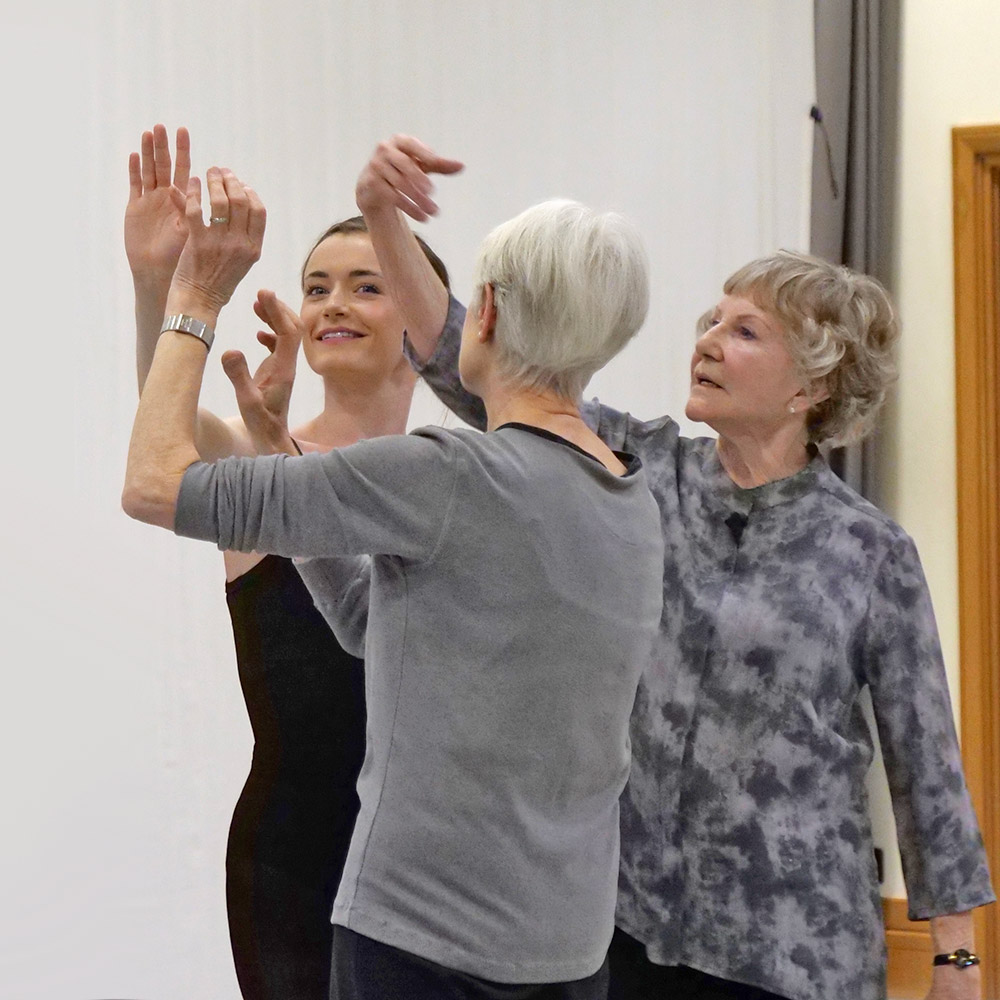
© Rachel Hollings. (Click image for larger version)
Ashton was also responsible for what Eagling called, “The double jockstrap lift.” Another non-technical expression and not what you might imagine – a lift that Ashton used in many of his ballets where the male has to sustain holding the female at waist height. One that is much more strenuous than locking his arms when the ballerina is above his head. Eagling recalled Symphonic Variations, a seventeen-minute ballet which was quoted by a current top principal of the Royal Ballet as being the most difficult and exhausting ballet he has ever danced. Within it, many of the lifts are at waist height. Sir Fred asked, and he received.
Eagling said at one point, “This is the horrible one for the boy.” Park quipped, “It’s not very nice for the girl either.” Then says to O’Sullivan, “Don’t worry if you kick him!” The banter between Park and Eagling was priceless.
After a brief comfort break, we were shown a 1983 recording of the two former Royal Ballet stars in Voices of Spring. It was utterly beguiling. The total abandon with which they approached the pas de deux made it look effortless, though Eagling was keen to stress that it was in fact completely exhausting.
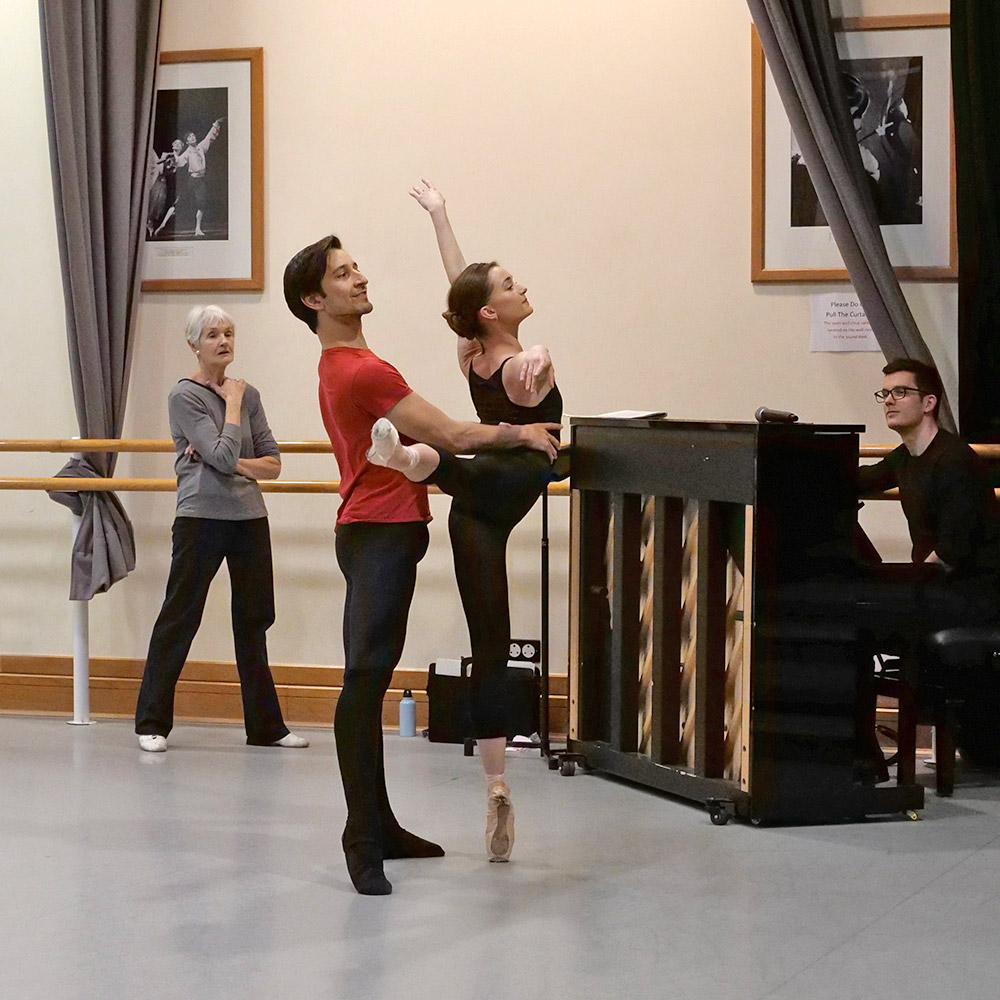
© Rachel Hollings. (Click image for larger version)
In the final section of the masterclass, Pritchard asked questions to Ann Whitley, the original choreologist, alongside Park and Eagling. Much discussion was had about the difficulties of coping with different conductors and the varying tempi. Zucchetti too claimed that it was something he had been subjected to, though Park countered that it was easier to dance when faster.
For anyone with an interest in the machinations of bringing a difficult pas de deux to performance standard, this was an experience to cherish. Learning more about Ashton, about his style, was invaluable to those with a special interest and watching O’Sullivan and Zucchetti at close quarters, with Park and Eagling spilling their pearls of wisdom, was an absolute thrill.









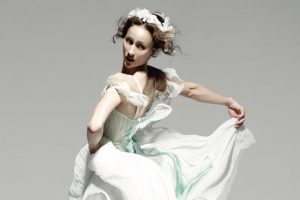



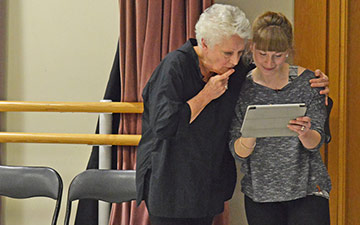

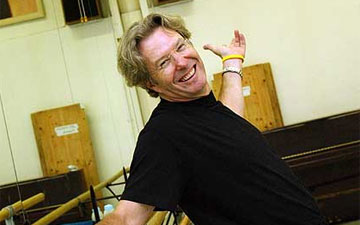
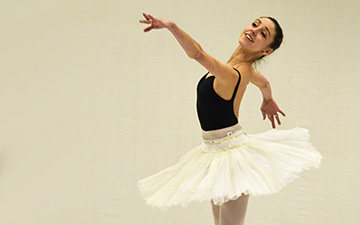
You must be logged in to post a comment.